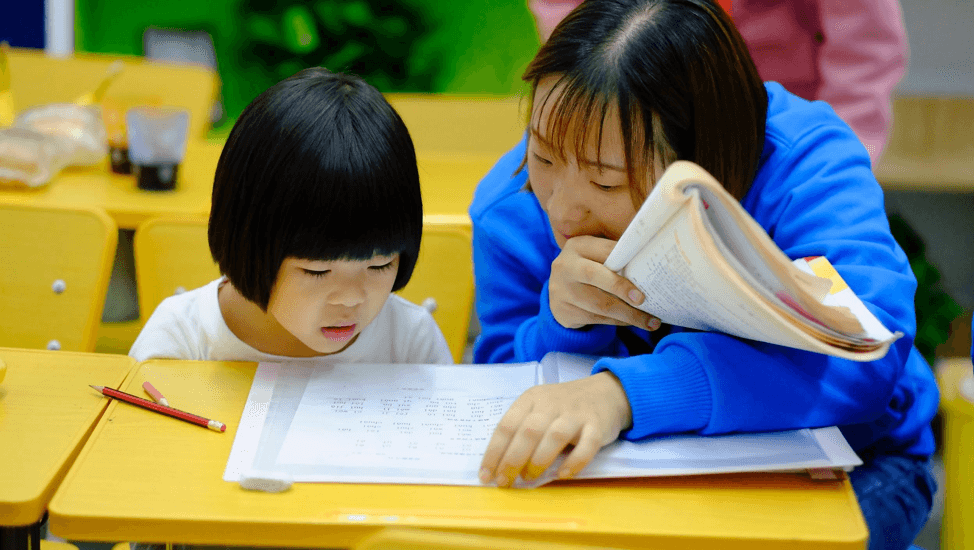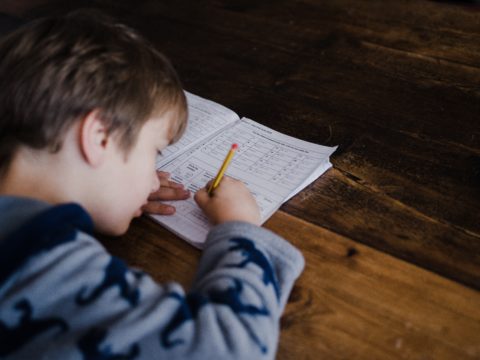Last year at Drexel University, associate professor Eric Brewe led a team of researchers who compared the brains of students before and after they learned a specific physics concept. Beforehand, fMRI scans of the students who were confronted with a related physics problem showed activity in the parts of the brain associated with learning (unsurprising), but also those associated with imagination (which may not be what you’d pair with physics)! After a course on the topic at hand, though, the students’ brains changed. They still fired through the learning sections of the brain, but also through more complex regions associated with episodic memory and self-referential thinking. Brewe suggested that these changes reflect access to more strategic and problem-solving resources: in other words, learning the concept gave the students to access new areas of their minds that weren’t part of the picture before.
As the study suggests, there’s an apparent difference between how the brain deals with concepts and tasks as its learning them and how it deals with them once they’ve become familiar. Teachers are crucial when it comes to providing a roadmap for that journey. And one key approach for effective teachers is guided practice, which can be employed after direct instruction and memory strategies (such as spaced practice or retrieval practice) have helped build surface knowledge of the fundamentals. Guided practice deepens students’ knowledge and helps them understand how they’re learning, so that they don’t fall into the classic trap of remembering enough to pass a test and promptly forgetting everything they’ve learned five minutes later! It also helps you spot and address any misconceptions they may have.
The first intention of guided practice is to help students get better at a specific task. One way to do this is by providing worked examples or model answers, which can also be interleaved with questions. Being able to see these resources in the early stages of learning a new concept or skill reduces the demands placed on active working memory. By reducing the cognitive load in working memory, there is more spare cognitive capacity to commit the task to long-term memory. As students improve, you can reduce the number of worked examples or model answers, then stop providing them altogether.
Another powerful way to do this is through scaffolding. We’ve talked about scaffolding before: like the structures that hold up a partially constructed building before it’s completed, pedagogical scaffolding helps support students’ potential weak spots as they develop knowledge.
For example, a high school English teacher might invite students to bring in some key concept notes on an index card for an in-class paper-writing assignment, reducing the demands on their memory so that they can focus on the process of proper essay construction. An equation sheet for a physics quiz performs a similar function. These tools free up some spare cognitive capacity in order to learn. Always bear two things in mind about scaffolds: first, they must be temporary (you’ve got to remove them at some point, with the option to reintroduce them if students continue to struggle); secondly, they shouldn’t make the task easy (and should instead provide just the right amount of challenge).
The second intention of guided practice is metacognitive; in other words, it helps students become aware of the skills and strategies that they need in order to succeed at a given task. Some students are quite adept at figuring out what they’re doing right, but many others may need some help in order to do so.
Reflection prompts are a great way to support this second aim of guided practice. For example, a homework math packet could include a table that lists several fundamental skills incorporated into the exercises and invite students to place each skill in one of three columns: I’m struggling to learn this, I know this well, and I know this well enough to teach it to a friend. This self-ranking helps students identify where their current strengths and weaknesses are. Another option could be a few simple questions that students must answer as an “exit ticket” at the end of the day: What strategies did you use to complete the in-class assignment today? How well do you think it worked? What other strategies did your classmates use that might help you next time? Quite often, the magic of learning comes from reflection!
As students use guided practice in order to a) learn something and b) understand why and how they’re learning it, its third intention becomes clear: as teachers, we can better understand where they’re struggling, and how we can help address any misconceptions that are present. This feedback loop helps us decide whether we need to offer different scaffolds, reteach a concept to a particular student, or even reteach it to our entire class! It also tells us when students have mastered the concept and are ready for a bigger challenge—such as using their newly found knowledge and skills in a new context. In short, guided practice is a tool that operates on multiple levels, helping students truly integrate new learning into their long-term memory—and helping teachers become better and better at what we do.
For more on guided practice, see Barak Rosenshine’s piece, “Principles of Instruction,” American Educator, Spring 2012.
At the CTTL, we’re always trying to create durable, usable, flexible knowledge: any learner should be able to put their knowledge into action and employ it in different contexts. That goes for teachers, too! The CTTL’s newest endeavor, Neuroteach Global, helps teachers infuse their classroom practices with research-informed strategies for student success—in just 3-5 minutes a day, on a variety of devices.




